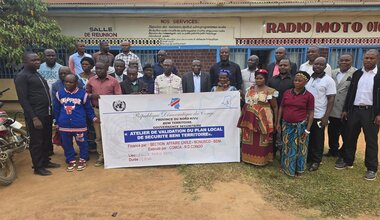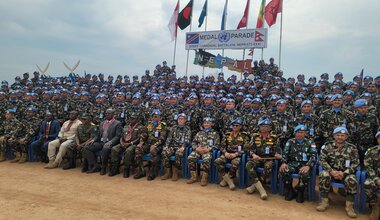World Food Day:
Martin Kobler, Special Representative of the UN Secretary-General in the DRC, celebrates the vital role of smallholder farmers in the Congolese society
Goma, 16 October 2014 – On the occasion of the World Food Day, observed under the theme Family Farming, Martin Kobler underlines its crucial functions.
“Not only does family farming nourishes the world, but it also protects the planet. That is why I would like to acknowledge the extraordinary work done by the Food and Agriculture Organization of the United Nations in supporting the Congolese population,” states the Head of MONUSCO before reminding us that “family farming is responsible for 70% of the world’s food production”.
Moreover, family farming can help in eradicating hunger and poverty, providing food security and nutrition, improving overall livelihoods, and achieving sustainable development, in particular in rural areas.
“Smallholders are the key actors of food security worldwide. In a country such as the Democratic Republic of the Congo where infrastructures still need to be improved, local production is essential. However, in order for the entire territory to benefit from DRC’s natural bounty, it is important to continue improving the production and the transmission of power as well as the circulation of goods. The rehabilitation of Goma airport allowing the landing and takeoff of cargo aircraft is an important step in this direction,” stresses the Special Representative of the Secretary-General in the DRC.
Note to editors (Source – FAO)
- 1.3 billion workers in the world are working in family farming.
- Family farming represents more than 70% of the world food production and 56% of the total agricultural production.
- There are more than 570 million farming holdings in the world, of which 500 million are family farms.
- Many family farmers, especially those who practice subsistence farming, are among the 70% of the world’s population living in rural areas suffering from food insecurity.
- The cost of undernutrition and micronutrient deficiencies is estimated to be around 2 to 3 percent of global GDP, which represents 1,400 to 2,100 billion USD per year.
- Average size of a farmland in the DRC : 0.5 hectare
- In the DRC there are about 4.5 million farmlands. 3.9 million of these occupy less than 1 hectare and almost none are wider than 5 hectares.
 UN
UN United Nations Peacekeeping
United Nations Peacekeeping





